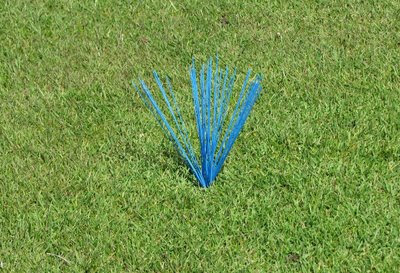However, despite these regular practices, larger projects and other labor intensive work is periodically needed to maintain range quality. We have done just this over the past 18 months and made several improvements - some obvious and some subtle. The addition of the mats has undoubtedly been the most obvious change, but other projects and agronomic practices made have had a big impact on the quality and usability of our spaciously challenged range.
Two predominant issues have crippled our range for several years.
- Lack of tee space - resulting in very minimal, poor turf to hit from by mid-season
- Poor drainage and exceedingly wet soil conditions - resulting in later than desired spring opening dates and long, post rain event closures
Satellite image showing excessive wear on the range tee roughly 2 years ago during mid-season.

To address these problems, we have taken several corrective measures which include the following.






To address these problems, we have taken several corrective measures which include the following.
- Resodding the range tee with a better performing grass variety - Fall 2007
- Drainage work at the end and sides of range - Spring 2008
- Addition of driving range mats - Summer 2008
- Installation of more accurate and efficient irrigation - Summer 2008
- Increase in intensity of aeration, topdressing, and fertilizing practices - Fall 2008 - present
- Deep tine aeration of entire range floor - Spring 2009
- Restoration of bunker edges and addition of sand material - Spring 2009





How does this affect you?
- Earlier spring opening dates as seen this year.
- Fewer range closures following rain events.
- Healthier and thicker grass to hit from.
- More aesthetically pleasing.
The tee quality shown below illustrates how valuable the mats were last season in providing periodic relief from the turf.


We are confident the range will continue to improve through these and similar efforts. As always, we appreciate your patience and cooperation during these projects and improvements.

























